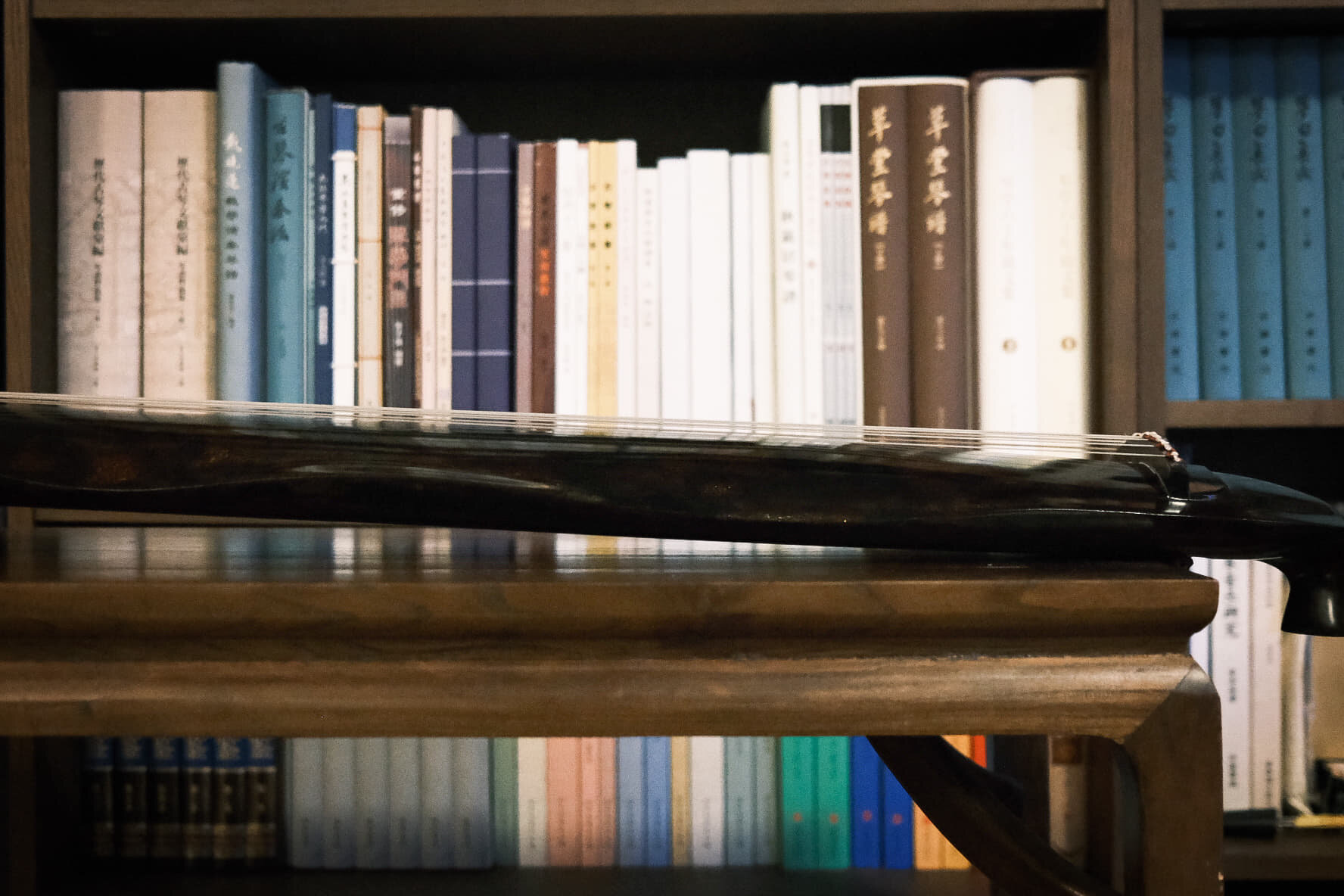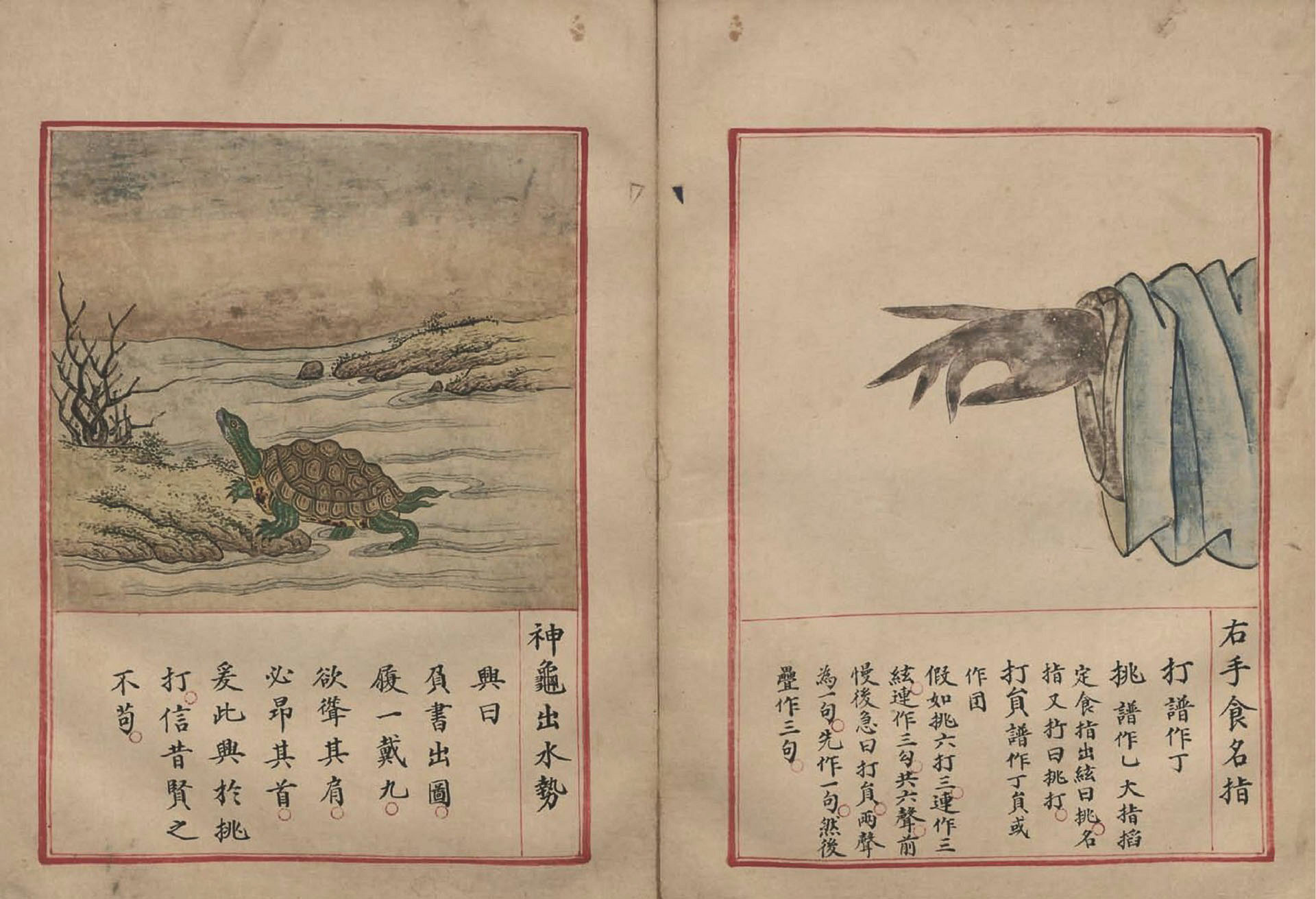
Guqin Techniques
孤鹜顾群势 - 勾 Gou
孤鹜念群,飞鸣远度,堪凌片影,弋人何慕,与落霞以齐飞,复徘徊而下顾。
The most commonly used right hand technique is middle finger playing inward, called "gou". According to 太古遗音琴谱 (AC1511) it resembles a lone mallard looking for its flock.
The above is a piece of Chinese poetry describing the imagery of this technique: a lone mallard misses its flock, its cries travels far across, its shadow flying high above that hunters cannot touch it. It flies within the clouds painted red by the sunset, wandering back and forth, occasionally peeking below.
The technique is driven by rotation of the middle finger knuckle. The entire middle finger needs to maintain a natural curve, especially the first joint counting from the fingertip, otherwise energy will be lost into the various joints of the finger when playing. When the middle finger is pressed, it is below all other fingers, resembling a flying mallard's head peeking downwards. The mallard out of reach by hunters is also a metaphor for a virtuous person being out of reach by a corrupt government.
Whilst it can vary by the sound effect required, it is usually played from middle finger resting on the string first, touching by the very tip of the finger. Two sound will be created one immediately after another, first is the flesh sound from the fingertip playing the string, second is the nail sound from the fingernail playing the string. The flesh sound is "murky" (浊) while the nail sound is "clear" (清), creating a balanced sound between yin and yang.
神龟出水式 - 挑 Tiao
负书出图,履一戴九;欲耸其肩,必昂其首,爰比兴于挑打,信昔贤之不苟。
The other most commonly used right hand technique is index finger playing outward, called "tiao". According to 太古遗音琴谱 (AC1511) it resembles the turtle spirit emerging from the Luo River.
The above is a piece of Chinese poetry describing the imagery of this technique: bearing the venation diagram of the universe on its back, the turtle spirit treads the earth and supports the heavens; to be protected by its shell, it must have its head raised: to become impervious to outside forces, one needs to first be impenetrable in character, this is imitated by the motions of tiao and da, a reminder of the conscientious actions that makes a saint.
The technique is performed with the thumb supporting the index finger to rotate its second joint. The entire right hand need to appear as if holding an invisible ball, with the index finger always maintaining a natural curve, together with the thumb tracing a complete circle. Before the technique starts, the circle is more round in shape resembling a dragon's eye, whereas after the technique is finished, the circle is more oval in shape resembling a phoenix's eye. The motion of the index finger pushing ahead with the thumb is like a turtle lifting its head from water.
There is freedom in the angle at which the index nail can strike the string, to produce different texture of sound as desired. However the foundational form is played with index finger aligned vertically, striking the string from a distance of about 1cm, at an angle of 45 degrees downwards. By making sure only the tip of the nail strikes the string resolutely, the sound produced will be clear and crisp. Tiao is complimentary to gou in every aspect: tiao is outward, gou is inward; tiao uses two fingers to produce one sound, gou uses one finger to produce two sound; tiao's hand shape is like the roundness of the sun, gou's resembles the crescent moon; tiao travels from empty space to empty space from start to finish, gou travels from resting on the played string to resting on the next string. It is no wonder that gou and tiao are usually played in pairs together, and are often found at the end of musical sentences to generate a feeling of completeness.

#古琴悉尼 #悉尼古琴 #sydney guqin #guqin sydney #闽派悉尼传承 #简斋古琴


